Shinji Yamada
Reconstructed Student-Teacher and Discriminative Networks for Anomaly Detection
Oct 14, 2022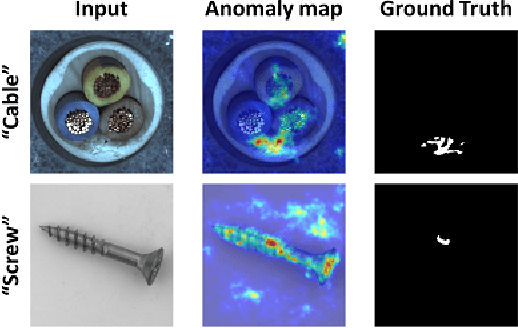
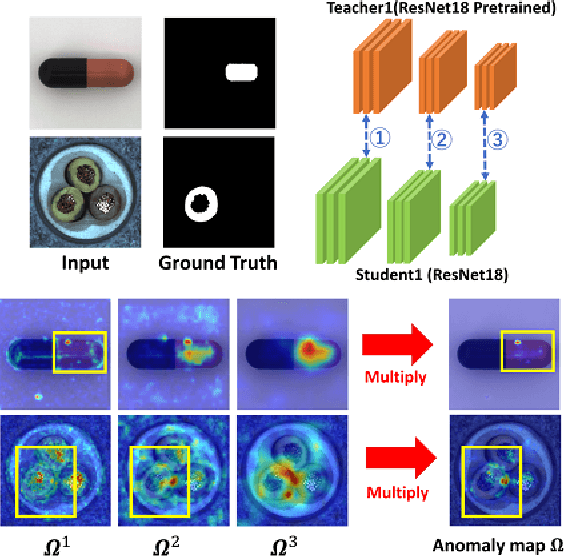
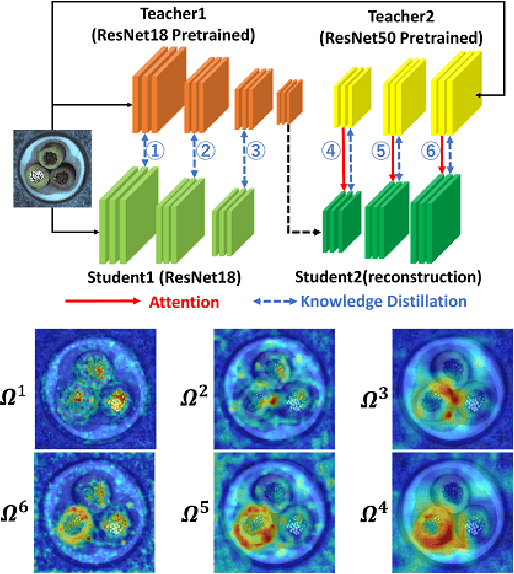
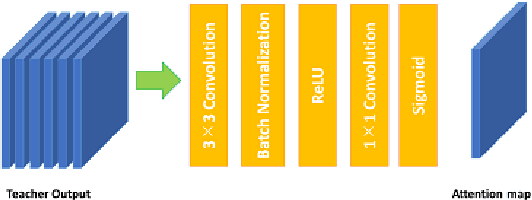
Abstract:Anomaly detection is an important problem in computer vision; however, the scarcity of anomalous samples makes this task difficult. Thus, recent anomaly detection methods have used only normal images with no abnormal areas for training. In this work, a powerful anomaly detection method is proposed based on student-teacher feature pyramid matching (STPM), which consists of a student and teacher network. Generative models are another approach to anomaly detection. They reconstruct normal images from an input and compute the difference between the predicted normal and the input. Unfortunately, STPM does not have the ability to generate normal images. To improve the accuracy of STPM, this work uses a student network, as in generative models, to reconstruct normal features. This improves the accuracy; however, the anomaly maps for normal images are not clean because STPM does not use anomaly images for training, which decreases the accuracy of the image-level anomaly detection. To further improve accuracy, a discriminative network trained with pseudo-anomalies from anomaly maps is used in our method, which consists of two pairs of student-teacher networks and a discriminative network. The method displayed high accuracy on the MVTec anomaly detection dataset.
Reconstruction Student with Attention for Student-Teacher Pyramid Matching
Nov 30, 2021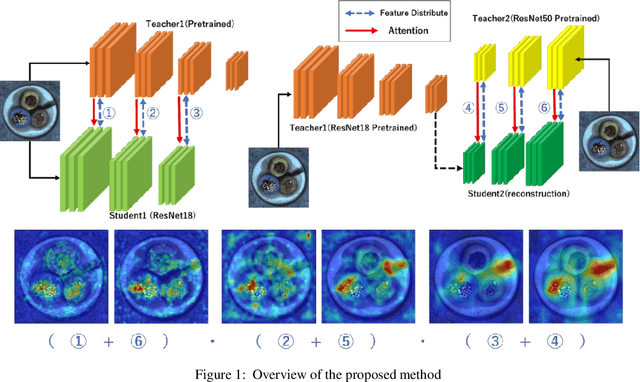
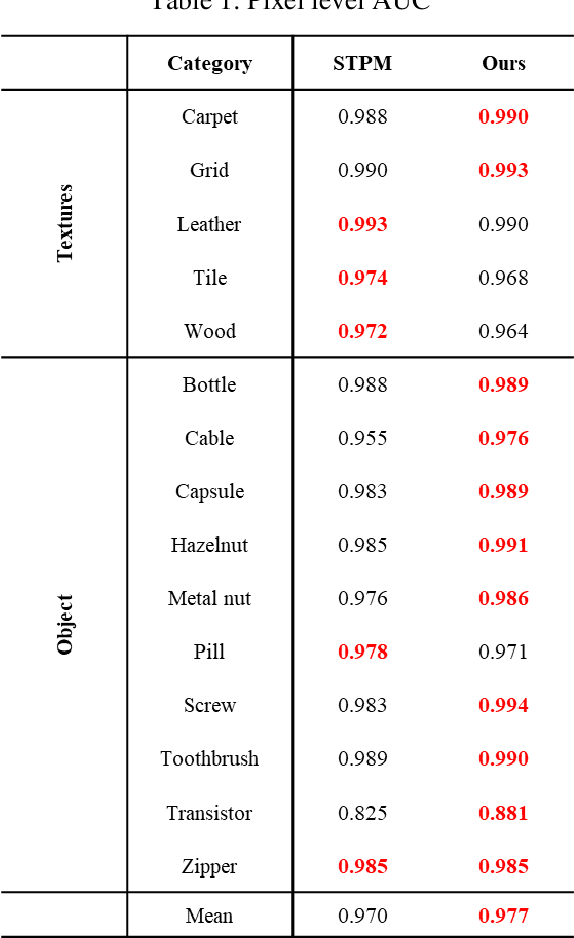
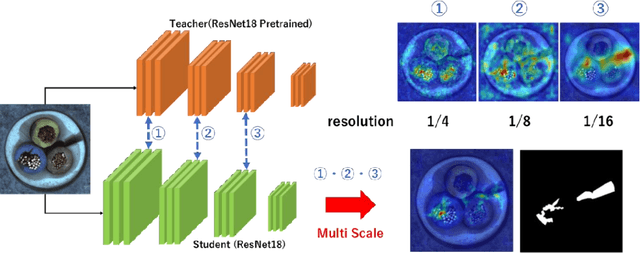
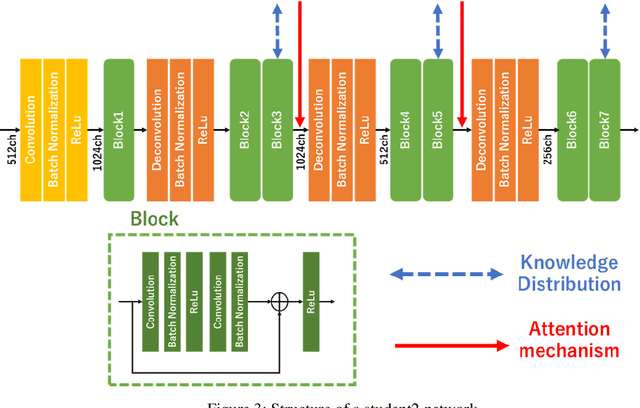
Abstract:Anomaly detection and localization are important problems in computer vision. Recently, Convolutional Neural Network (CNN) has been used for visual inspection. In particular, the scarcity of anomalous samples increases the difficulty of this task, and unsupervised leaning based methods are attracting attention. We focus on Student-Teacher Feature Pyramid Matching (STPM) which can be trained from only normal images with small number of epochs. Here we proposed a powerful method which compensates for the shortcomings of STPM. Proposed method consists of two students and two teachers that a pair of student-teacher network is the same as STPM. The other student-teacher network has a role to reconstruct the features of normal products. By reconstructing the features of normal products from an abnormal image, it is possible to detect abnormalities with higher accuracy by taking the difference between them. The new student-teacher network uses attention modules and different teacher network from the original STPM. Attention mechanism acts to successfully reconstruct the normal regions in an input image. Different teacher network prevents looking at the same regions as the original STPM. Six anomaly maps obtained from the two student-teacher networks are used to calculate the final anomaly map. Student-teacher network for reconstructing features improved AUC scores for pixel level and image level in comparison with the original STPM.
 Add to Chrome
Add to Chrome Add to Firefox
Add to Firefox Add to Edge
Add to Edge